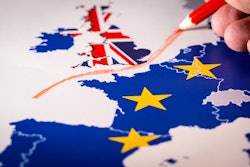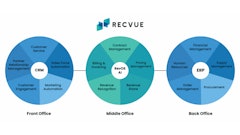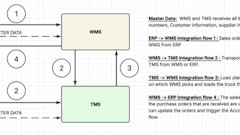
On June 23, 2016 the United Kingdom voted in a referendum to leave the European Union (EU), with the official departure set for Friday March 29, 2019 at 11 p.m. What businesses will wake up to on March 30 is unclear at this time, yet many are worried as they prepare, and they are right to be concerned.
Despite some onerous regulations, the EU offers significant advantages to its member states when it comes to trade and supply chains. Thanks to the Single Market, EU states enjoy free trade and the open movement of goods, labor, people and capital. In the words of Jonathan Lis, director of the think tank British Influence, “The Customs Union acts as a tariff firewall around the EU,” meaning that without tariffs the EU member countries can operate more efficiently with lower costs, giving them a competitive advantage over non-EU companies.
New Business Burdens Post-Brexit
With the UK leaving the Customs Union after Brexit, free trade agreements will need to be put in place to avoid any significant increases in trade friction between the EU and the UK. Failing that, any company trading through EU-UK borders will likely be competitively hampered post Brexit. These penalties include:
- Tariffs: Currently UK companies enjoy freedom from tariffs. If no agreement is reached to maintain these zero tariff rates, companies will have to pay the duties listed in the EU tariff schedule. The UK intends to adopt this same schedule, so EU companies exporting to the UK will face similar charges, adding significant costs to goods.
- Rules of Origin: The origin of goods determines many aspects of how goods are handled affecting the tariffs applied, quotas, taxes and anti-dumping duties. Even if a Free Trade Agreement (FTA) is in place by Brexit, products will need to satisfy “Rules of Origin” to benefit from zero tariffs under the FTA. These rules would impose a lot of administrative overhead on EU and UK companies.
- Administration: Paper work and electronic documentation will almost certainly increase with Brexit and the UK’s departure from the Customs Union. A new EU-UK border will turn current “domestic” supply chains into cross-border, multi-leg supply chains. This will require customs paper work such as export and import declarations with supporting evidence. Goods will need to be inspected at each border, which could cause significant delays, making supply chains vulnerable to supply disruptions and shortages.
- More Partners: Companies will also need to introduce new participants into the process such as freight forwarders and customs brokers. Aligning processes and systems adds complexity, costs and delays.
While most of the Brexit fallout will be confined to Europe, it could still have a significant impact on global trade. Many global supply chains run through the UK and will be impacted by rising trade barriers and costs. The simple, single link that constitutes the current UK-to-Europe leg of the supply chain will fracture and require the introduction of new partners, systems and procedures, all of which incur a cost and time penalty.
Bridging Divisions with Digitization
To minimize these burdens and costs, many organizations are looking at multi-party, digital networks as a way for businesses to sidestep many of the business and economic consequences of Brexit. While Brexit represents an unraveling of the political and economic patchwork of Europe, digitization promises to connect businesses together, reduce trade friction and fuel collaboration and commerce.
While no cure for fractured political relationships, a digital business network can reduce Brexit disruption by sharing critical supply chain information, eliminating vast amounts of paperwork, automating routine tasks and optimizing crucial operations such as inventory management and transportation.
How Digital Business Networks Can Eliminate Supply Chain Interruption
The benefits of joining a digital business network can reduce the risks and costs of being outside the EU and the Customs Union. They can reduce the effects of new borders by making data sharing instantaneous regardless of border barriers, alerting supply chain managers to potential customs issues and enabling collaboration between business partners to resolve problems quickly.
For instance, they can help digitize and share documentation and information to streamline administrative procedures which could have a huge impact on costs and administrative overhead. According to The Economist, one shipment of avocados into the EU entailed more than 200 communications involving 30 parties, resulting in the costs to process trade documents made up as much as 20 percent of the logistics costs.
These new digital networks eliminate blind spots, delays and manual labor. Documents can be filed and processed as they occur, trigger new business activities and alert supply chain managers to anomalies and missed milestones. If key documentation, such as a customs declaration or proof of origin certificate is missing, the system can immediately alert managers, so they can resolve it ahead of time rather than have cargo detained unnecessarily due to customs violations.
Optimizing and Streamlining the Supply Chain Beyond Borders
The benefits of digitization extend beyond customs and borders. Digital networks provide advantages that can compound across the entire supply chain. These benefits can offset costs incurred by Brexit and could even put companies ahead of their EU competitors.
For instance, on a real-time network, exporters and importers have visibility to containers. They also have real-time visibility to demand, so they know how urgently a shipment is needed. This means they can prioritize container unloading and select the appropriate land-side transportation mode to effectively meet that demand at the lowest cost.
With real-time visibility to supply, demand and inventory across all tiers of the supply chain, they can perform sophisticated global supply-demand matching. When problems occur in supply, demand or in logistics, the system can suggest resolutions based on the current demand and the available inventory across the entire supply chain. For example, if a container with a high priority order is delayed at customs, the network can alert the relevant parties and identify the nearest distribution center and recommend that as the alternate supply point. This helps optimize the supply chain to meet demand at the lowest cost, with minimal disruptions.
How to Get the Best Out of Brexit
Given all the uncertainty around Brexit, it is too soon to jump into action by either assuming the worst or optimistically the best. Organizations are encouraged to act now to prepare for any outcome by ensuring they are well positioned to pivot and adapt to the customs and regulatory changes that result from Brexit. A good place to start is by taking stock of your existing technology solutions and identifying where your organization stacks up again three key criteria by asking if it can:
- Enable Multi-Party Collaboration. Is the technology built primarily for the enterprise with connections to trading partners as an afterthought or is it multi-party at the core? This is important because solutions built on a multi-party data model and network can connect a company to all parties via a single connection to support a single version of the truth for all. This capability will become increasingly critical for those who need to change from essentially domestic, in-country (EU), to multi-leg, cross-border (EU-UK) operations post-Brexit. This means new partners, such as Freight Forwarders and Customs Brokers, and their systems, will have to be on-boarded. A multi-party network enables rapid on-boarding, so new partners connect once, and then have end-to-end visibility. Then, they can collaborate with all other companies on the network as needed.
- Contain an Agile Architecture. Does it enable business and technological agility? What a business can do is often limited by what its technology supports. Companies should ensure that their technology is flexible enough to adapt quickly, so they can meet new regulations, customs procedures, and market conditions, whatever those happen to be. Software Developer Kits (SDKs) for these systems and networks are a necessity in the rapidly changing economic and regulatory climate of Brexit, as they allow companies to adapt existing software solutions and build new ones quickly.
- Respect the Past, Embrace the Future. How about current and future technologies? Companies should look for solution that embraces existing systems, so they can fully leverage current IT investments, and communicate and collaborate with their trading partners in real time, regardless of the systems each are using. Anticipating and embracing new technologies enables companies to exploit the latest innovations to improve their supply chains and maximize their investments, while staying current and never going legacy.
What happens post-Brexit remains to be seen, but one thing is certain: companies that value and cultivate flexibility and agility, and who implement future-friendly technology, can support virtually all scenarios and will find that they are in the best position to adapt and flourish to whatever Brexit throws their way.


![Pros To Know 2026 [color]](https://img.sdcexec.com/mindful/acbm/workspaces/default/uploads/2025/08/prostoknow-2026-color.mduFvhpgMk.png?auto=format%2Ccompress&bg=fff&fill-color=fff&fit=fill&h=100&q=70&w=100)








![Pros To Know 2026 [color]](https://img.sdcexec.com/mindful/acbm/workspaces/default/uploads/2025/08/prostoknow-2026-color.mduFvhpgMk.png?ar=16%3A9&auto=format%2Ccompress&bg=fff&fill-color=fff&fit=fill&h=135&q=70&w=240)









